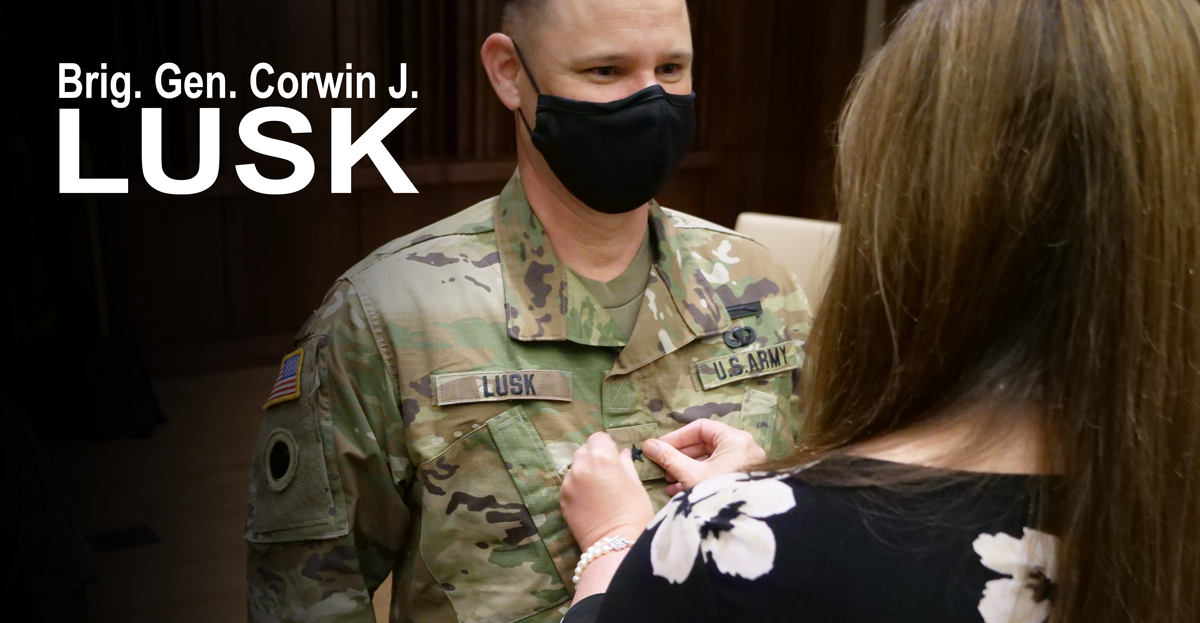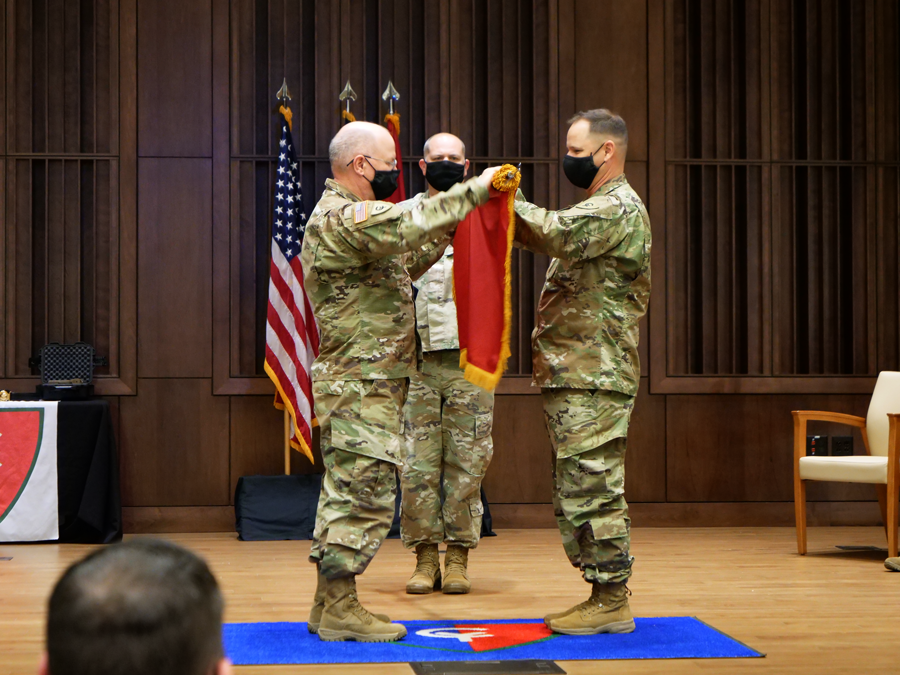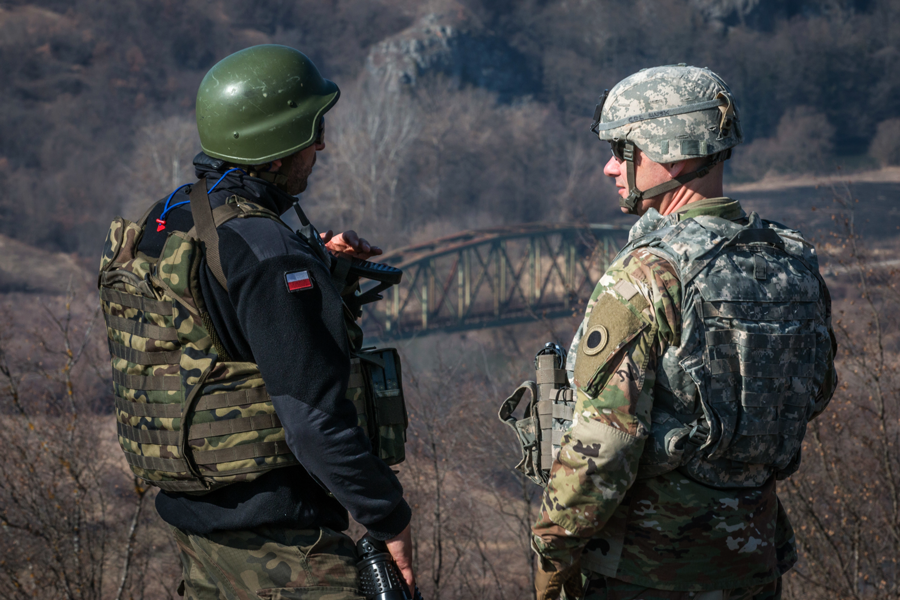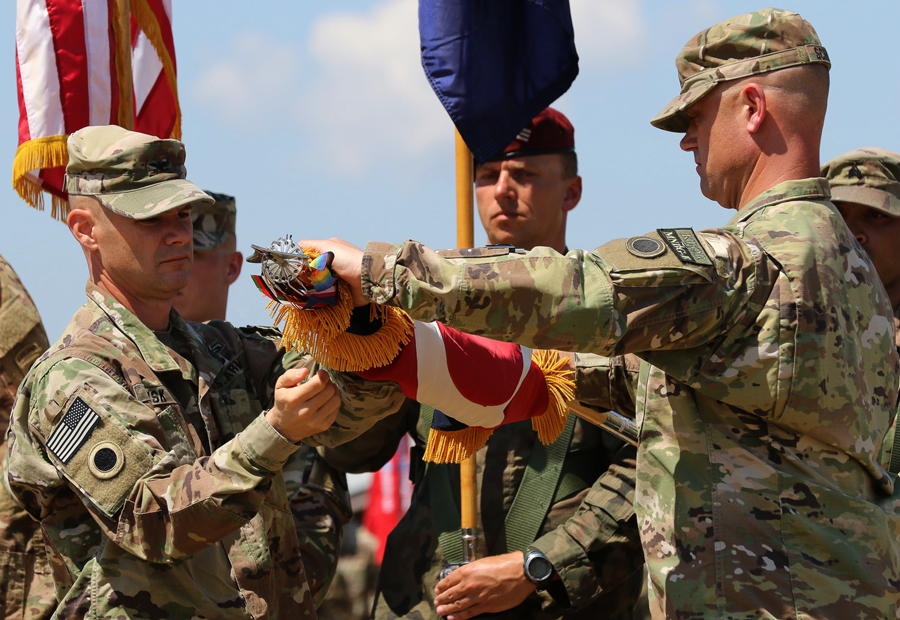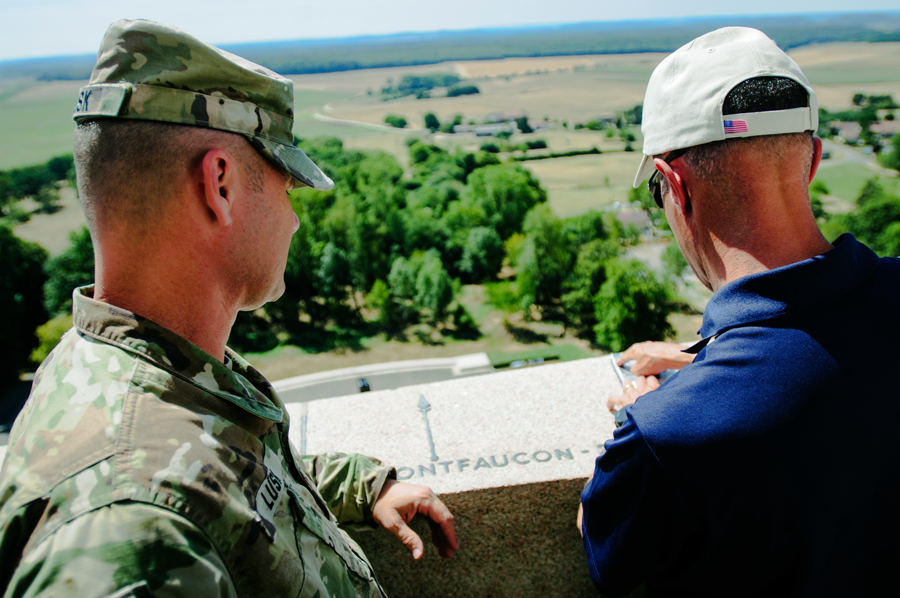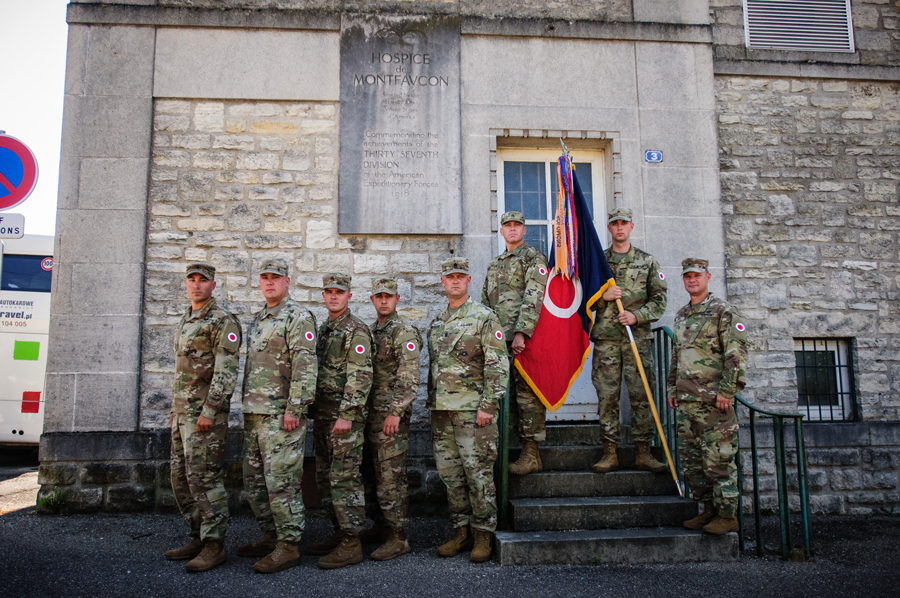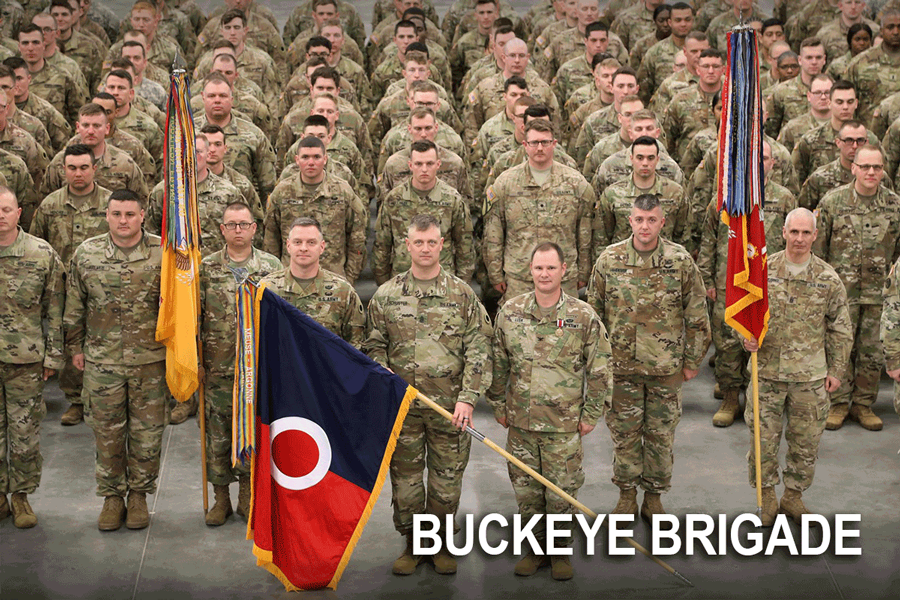Buckeye pins on stars while serving in senior 38th ID leadership role
Story by Master Sgt. Jeff Lowry, 38th Infantry Division Public Affairs and
Staff Sgts. George Davis and Jennifer Reynolds, Ohio National Guard Public Affairs
INDIANAPOLIS, Indiana (04/11/21)
A former senior leader in the Ohio Army National Guard who has been part of the 38th Infantry Division Command team since December 2020 pinned on his brigadier general’s stars during a promotion ceremony April 11 at the 38th ID headquarters at Stout Field. New Brig. Gen. Corwin “Cory” Lusk, who previously commanded two different OHARNG brigades, now serves as the 38th ID’s deputy commanding general for operations.
In his current role, Lusk, a veteran of four overseas deployments who commanded the OHARNG’s 37th Infantry Brigade Combat Team and 174th Air Defense Artillery Brigade, helps facilitate effective training for all of the subordinate units aligned under the 38th ID including those from Indiana, Illinois and Ohio.
Lusk received his new rank from family members and Maj. Gen. Tim Thombleson, 38th ID commanding general, during the ceremony attended by scores of division Soldiers, family and friends. “With any promotion the more rank you get, the more responsibilities you have to your Soldiers,” Lusk said. “We’re the greatest Army in the world, but we didn’t get there by tanks and cannons and equipment and technology and processes; we got there by the Soldiers who employ our ranks.”
We’re the greatest Army in the world, but we didn’t get there by tanks and cannons and equipment and technology and processes; we got there by the Soldiers who employ our ranks.
Lusk reflected on what it meant to him to be a part of the “Cyclone” Division.
“Right off the bat, I realized how professional the organization is, and how professional the Soldiers are,” he said. “I really enjoy that. When you come into a new organization by yourself, it’s kind of like my experience on active duty, you do not know what you’re walking into, but it’s been great.”
During the ceremony, Lusk, since he is now a general officer, received his new rank shoulder boards for his jacket, epaulets for his shirt, a black leather general officer’s belt, a pistol and two, one-star flags.
Thombleson said leaders must possess an undying spirit to guide, mentor and advise troops.
“Today that spirit lives in our Army, lives in our service, lives in Cory and those who surrounded Cory in his career,” Thombleson said. “You see that spirit in the deputy commanding general of one of 18 combat divisions in the United States Army. Cory brings that to us from our great neighboring state of Ohio.”
The division’s newest general officer has deployed overseas four times — to Kosovo, Kuwait, Bosnia and Guantanamo Bay, Cuba. In 1991, he earned his bachelor’s degree in economics from the University of Kansas and was commissioned as a second lieutenant through ROTC. He led the OHARNG’s 37th Infantry Brigade Combat Team from 2016 to 2019 including the 10-month tour in Kosovo, in 2016-17.
In his position as deputy commanding general for operations, Lusk helps facilitate effective training for all of the subordinate units aligned under the 38th ID, comprising Ohio’s 37th IBCT, the Indiana Army National Guard’s 76th IBCT and the Illinois Army National Guard’s 33rd IBCT, along with the division’s artillery battalion, combat aviation brigade and sustainment brigade.
“(Brig. Gen.) Lusk brings a fresh outlook, a wealth of experience, and Army leadership values to lead Indiana’s largest unit with approximately 9,500 Citizen-Soldiers spread across the Hoosier state,” said Maj. Gen. John C. Harris Jr., Ohio adjutant general, who also attended the promotion ceremony and presented Lusk with his general officer’s belt.
Having a long, successful history of excellent leadership tenures commanding two of the OHARNG’s brigades was an important aspect of Lusk’s qualifications for his current position. His ties to the 37th IBCT have allowed him to integrate effectively with the 38th ID leadership and better positions Ohio to partner with other states to benefit from new Army force structure alignment policies.
“I have had the opportunity to serve with (Brig. Gen.) Lusk while both he and I were assigned to the 37th IBCT,” said Maj. Gen. Gordon Ellis, who preceded Thombleson as commanding general of the 38th Infantry Division and retired earlier this year. “I know him to be a solid, professional officer who never failed to achieve a mission. His past performance and his previous command of the 37th has prepared him well for the position of deputy commanding general with the 38th Infantry Division.”
Throughout his career, Lusk has proven adept at handling the many challenges inherent with leading the fast-paced operations and training required of Army units with full-spectrum battlefield capabilities.
“The biggest thing is the scale. When I took over the 1st Battalion, 145th Armored Regiment, it was enormous,” Lusk said. “I had only been a company commander before. I’d never commanded a unit that size, and then the scale going from that to a brigade commander is even greater. And now I have the scale of going to a division. There are just a lot of resources that larger organizations have.”
The resources and training opportunities afforded to units structured under an Army division are opportunities the National Guard intends to capitalize on. The National Guard Bureau has policy plans for infantry brigades to be organized under a division Alignment for Training (AFT). By doing this, the force structure of the Army National Guard will resemble its composition prior to the development of the more modular infantry brigade combat teams seen today.
Under the policy, individual states will maintain command authority of their units, but the training alignment will facilitate relationships between both higher and lower echelon-aligned units across state lines. This relationship establishes a process to enable division commanders with oversight, mentorship and input in lower echelon unit training and readiness.
The policy brings National Guard infantry brigades into alignment with Department of the Army and National Defense Strategy objectives. The 2018 National Defense Strategy identified interstate strategic competition as the primary concern for U.S. national security. To meet these challenges, the U.S. Army has invested resources in restoring many division-level capabilities. Comprising nearly 50% of the Army’s available operating force, the Army National Guard must transition with the active component to a division-based force.
“This is all being driven by what we think the needs of the Army will be in the future, in terms of warfighting,” Lusk said. “It’s not flowing brigades into and out of Iraq and Afghanistan anymore. We are going to need large-scale units that are used to working with each other. Putting more meat on the bone, for the divisions. That is where the fight will be if you go to large-scale combat.”
With the experiences of four deployments and a wealth of command time, Lusk is positioned as an excellent resource for the units aligned under the 38th ID.
“I think this alignment for training happened to provide more resources for subordinate units that don’t necessarily have them,” Lusk said. “At that division-level jump, there are a lot of resources and functions that the brigades are not exposed to until they deploy and roll up under a division or division headquarters.”
With Lusk at the helm and NGB guidance on how to align training, the 38th Infantry Division is poised to better develop overall readiness among the infantry brigades and other subordinate units in the region, and stands ready to lead the warfight well into the future.
Lusk, a Loveland, Ohio native and his wife, Amy, have three children: Alex, Laurel and Mikhail.
